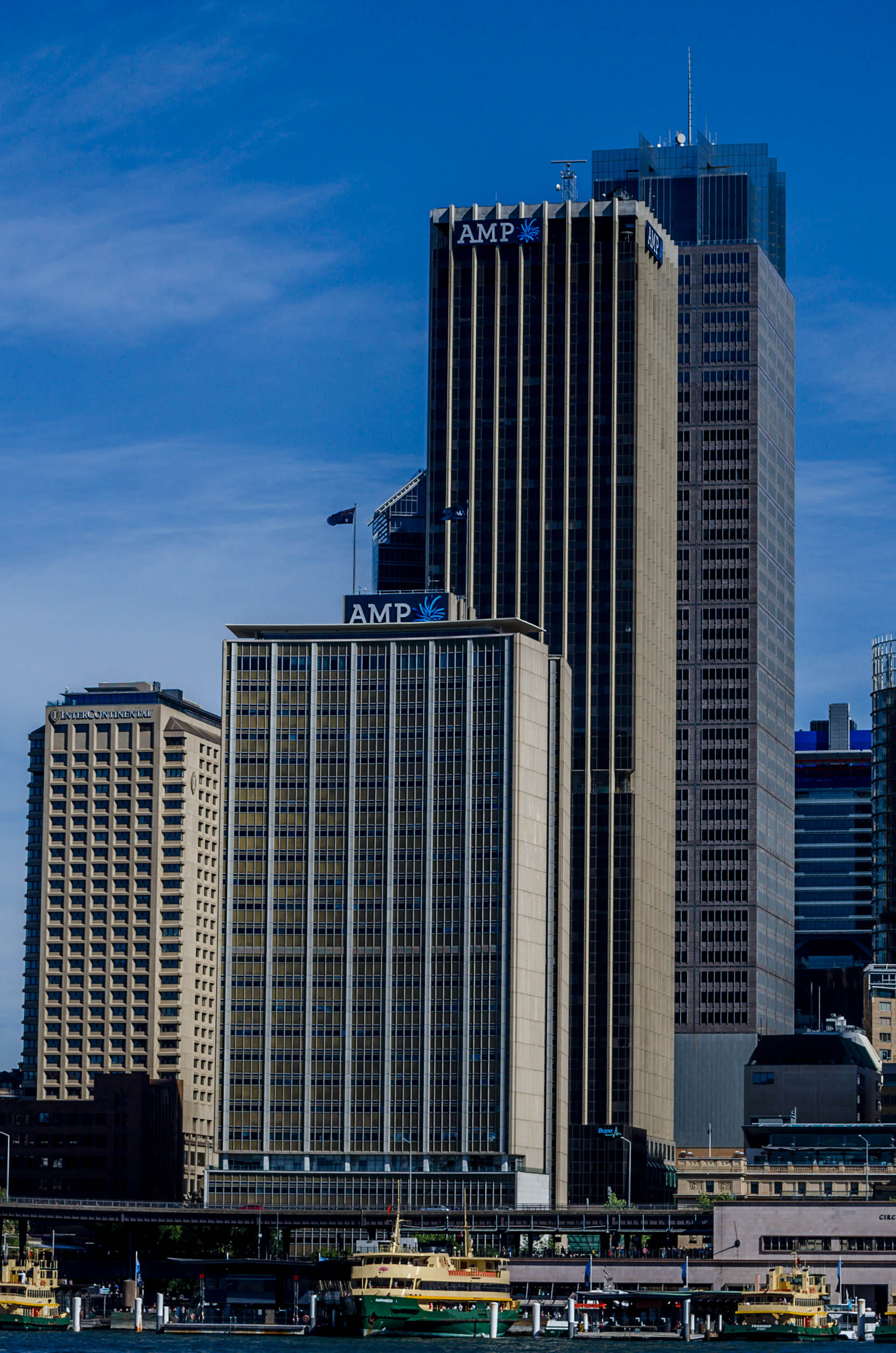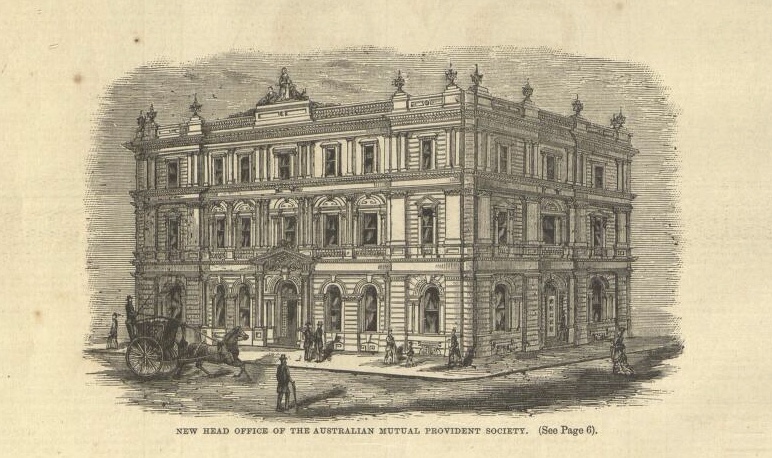|
AMP Building (other) , former AMP Building in Brisbane
{{disambiguation ...
AMP Building usually refers to buildings used by AMP Limited. It may refer to: * AMP Building, Brisbane * AMP Building, Hobart * AMP Building, Perth *AMP Building, Rockhampton *AMP Building, Sydney, the AMP head office since 1962. * Australian Mutual Provident Society head office, Sydney, the former head office in Sydney from 1878 to 1962. * AMP Building, Wellington *AMP Centre, Sydney * Magnetic House, the first AMP Building in Townsville * Australian Mutual Provident Society Building, the second AMP Building in Townsville *MacArthur Chambers MacArthur Chambers is a heritage-listed former office building at 229 Queen Street (corner of Edward Street), Brisbane City, City of Brisbane, Queensland, Australia. It was designed by Francis Richard Hall and built from 1931 to 1934 by Ge ... [...More Info...] [...Related Items...] OR: [Wikipedia] [Google] [Baidu] |
AMP Limited
AMP is a financial services company in Australia and New Zealand providing superannuation and investment products, financial advice, and banking products (through AMP Banking) including home loans and savings accounts. Its headquarters is in Sydney, Australia. The Australian Mutual Provident Society was formed in 1849 as a non-profit life insurance company and mutual society. In 1998, it was demutualised into an Australian public company, AMP Limited, and listed on the Australian and New Zealand stock exchanges. AMP has one of Australia's largest shareholder registers, with most shareholders living in Australia and New Zealand. This is because when the society demutualised, all policy holders received shares in the new company. In 2003, the company demerged its UK operations, creating the Henderson Group. On 20 April 2018, Craig Meller resigned as CEO after it was revealed in the Royal Commission into Misconduct in the Banking, Superannuation and Financial Services I ... [...More Info...] [...Related Items...] OR: [Wikipedia] [Google] [Baidu] |
AMP Place, Brisbane
Officially named the AMP Centre, AMP Place is a gold-coloured skyscraper located in the heart of the Brisbane central business district in Queensland, Australia. It can be seen from most parts of the city and is known locally as "The Gold Tower". When the skyscraper was completed in 1978, it was Brisbane's tallest building. It consists of 35 floors and is 135 m (443 ft) high. The architects were Peddle Thorp & Walker. In April 2021, CPP Investment Board and Dexus sold the building to Marquette. Dexus 6 April 2021 See also *List of tallest buildings in Brisbane
Brisbane, Au ...
[...More Info...] [...Related Items...] OR: [Wikipedia] [Google] [Baidu] |
NAB House
NAB House (formerly known as the AMP Building) is an A-grade office building situated in Hobart, Tasmania. History and Construction In 1884, the Australian Mutual Provident Society (AMP) constructed their first Hobart offices on the corner of Collins and Elizabeth Streets, Hobart. The A.M.P Society building, which was designed by Henry Hunter, was a large three-storey building with a sandstone façade and figurehead typical of Victorian-era architectural works. These offices were reconstructed and redeveloped in 1913, and subsequently featured a large sandstone archway entrance. In 1968, the building was demolished for the construction of a newer and more modern office tower which stands to this present day. The tall sandstone archway which stood over the entrance to the original 1913 building was donated by AMP in 1968 to the Royal Tasmanian Botanical Gardens, where it received a decorative carving commemorating the foundation of the Gardens and the re-erection of the archwa ... [...More Info...] [...Related Items...] OR: [Wikipedia] [Google] [Baidu] |
140 St Georges Terrace
140 St Georges Terrace is a 30-storey skyscraper in Perth, Western Australia. Opened in 1975, the tower was known as the AMP Building or AMP Tower after its owner and former flagship tenant, AMP Limited. The building became the tallest completed skyscraper in Perth in 1975, a title which it held only until 1976, when Allendale Square was opened. Site history and construction The site at the corner of St Georges Terrace and William Street known as "Carr's Corner" was purchased by AMP in 1910, and in 1915 the ''AMP Chambers'' designed by Oldham and Cox were built on the corner. This six-storey building was clad with sandstone, and the interior was decorated with jarrah. The top of the building featured an iconic bronze statue, which became a landmark atop the chambers. The high statue depicted four figures: a central figure symbolised protection, and it was flanked by a man, woman and child. Weighing around , the sculpture was hollow with a wooden base and was thought ... [...More Info...] [...Related Items...] OR: [Wikipedia] [Google] [Baidu] |
AMP Building, Rockhampton
AMP Building is a heritage-listed office building at 183 East Street, Rockhampton, Rockhampton Region, Queensland, Australia. It was designed by Francis Drummond Greville Stanley and built in 1888. It is also known as Brahman House. It was added to the Queensland Heritage Register on 21 October 1992. History The AMP Building, currently known as Brahman House, is constructed in masonry faced most ornately with painted and modelled cement render on its loggia to East Street. Designed using classical motifs by the former Queensland Colonial Architect, FDG Stanley, this two-storey structure was built for the Australian Mutual Provident Society (AMP) in 1888. Rockhampton was established beside the Fitzroy River on land that was originally part of Gracemere Station, a pastoral property taken up by the Archer brothers in the 1850s. Following a gold discovery at Canoona station and a survey by Arthur F Wood, the town of Rockhampton was proclaimed on 25 October 1858. Wood had worke ... [...More Info...] [...Related Items...] OR: [Wikipedia] [Google] [Baidu] |
AMP Building, Sydney
The AMP Building is a high rise office block in the Sydney central business district on the corner of Alfred, Phillip and Young Streets. History In 1958, the AMP Society announced plans to build a new headquarters in the Sydney central business district on the corner of Alfred, Phillip and Young Streets. It was designed by Peddle, Thorp and Walker architects and was the tallest building in Australia, being opened on 23 November 1962 by Prime Minister Robert Menzies. It had an observation deck An observation deck, observation platform, or viewing platform is an elevated sightseeing platform usually situated upon a tall architectural structure, such as a skyscraper or observation tower. Observation decks are sometimes enclosed ... on its roof and had over a million visitors in the first 2 years. [...More Info...] [...Related Items...] OR: [Wikipedia] [Google] [Baidu] |
Australian Mutual Provident Society Head Office, Sydney
The Australian Mutual Provident Society Head Office was a landmark office building at 87 Pitt Street, Sydney, Pitt Street, bounded by Bond Street and Curtin Place in the Sydney central business district, central business district of Sydney. The first AMP head office building on this site was completed in 1878 and designed in the renaissance mannerist style by George Allen Mansfield. This building was substantially rebuilt and expanded in 1909–1912 in the Free Classical style by Ernest Alfred Scott. This building was the head office of the Australian Mutual Provident Society from 1878 until 1962, when the new AMP Building, Sydney, AMP Building at Circular Quay was completed. The former head office building was demolished in September 1962 to make way for the landmark modernist Australia Square development by Lendlease, Lend Lease/Civil & Civic and designed by Harry Seidler. History Early premises, 1849–1878 When the Australian Mutual Provident Society commenced business in Sydn ... [...More Info...] [...Related Items...] OR: [Wikipedia] [Google] [Baidu] |
AMP Society Building
The AMP Society Building is a historic building on Customhouse Quay, Wellington, New Zealand. The Australian Mutual Provident society was founded in 1849 and established a branch on Featherston Street, Wellington in 1871. The AMP Society Building was built in 1928, and features a classical facade of grey New Zealand granite and sandstone from the Hawkesbury River in New South Wales. The building is classified as a "Category I" ("places of special or outstanding historical or cultural heritage significance or value") historic place by the New Zealand Historic Places Trust. It is currently occupied by the Sport New Zealand Sport New Zealand (Sport NZ) (Māori: ''Ihi Aotearoa'') is a New Zealand Crown entity responsible for governing sport and recreation in New Zealand. Sport NZ believes sport is an integral part of New Zealand's culture and way of life. The o ... and other government entities. References Buildings and structures in Wellington City Heritage New Zeal ... [...More Info...] [...Related Items...] OR: [Wikipedia] [Google] [Baidu] |
AMP Centre
The Quay Quarter Tower is a skyscraper located at 50 Bridge Street, Sydney. Originally built as the AMP Centre in 1976, the structure underwent a redevelopment from 2018 to 2021 which increased its height, incorporated additional floorspace, and modernised the tower's entire form and design. The building re-opened as the Quay Quarter Tower in early 2022 and currently stands at a height of 216 meters (709 feet) with 54 floors. History (AMP Centre) The tower in its original form as the AMP Centre was built in 1976, consisting of 45 floors. It was used for commercial office space and was made up of concrete, glass, and steel. Designed by Peddle Thorp & Walker and built by Mainline. The center's roof-height reached 188m, making it the tallest building in Sydney at the time of its completion, prior to the completion of the MLC Centre in 1977. Redevelopment (Quay Quarter Tower) In 2013 Australian architectural practice BVN designed a new masterplan for the Quay Quarter Sydney pr ... [...More Info...] [...Related Items...] OR: [Wikipedia] [Google] [Baidu] |
Magnetic House
The Magnetic House is a heritage-listed office building at 143-149 Flinders Street East, Townsville, City of Townsville, Queensland, Australia. It was designed by C H E Blackmann & John Sulman and built from 1886 to 1888 by Dennis Kelleher. It was later known as Magnetic House. It was added to the Queensland Heritage Register on 21 August 1992. History This two-storeyed masonry building was erected in 1886-88 at a cost of nearly , as the Townsville office of the Sydney-based Australian Mutual Provident Society. The site was acquired by the society in 1885. The AMP Society had been established in Sydney in 1848/49 under the NSW Friendly Society's Act of 1843, and was one of a number of benefit and friendly societies established in the Australian colonies in the mid and late 19th century. Founded by a group of prominent Sydney philanthropists, the AMP Society initially offered life assurance policies, endowments and annuities, aimed principally at ensuring that women and chil ... [...More Info...] [...Related Items...] OR: [Wikipedia] [Google] [Baidu] |
Australian Mutual Provident Society Building
The Australian Mutual Provident Society Building is a heritage-listed office building at 416-418 Flinders Street, Townsville CBD, City of Townsville, Queensland, Australia. It was designed by Hall and Cook and built from 1937 to 1938 by Stuart Brothers. It is also known as the former AMP Building and Connolly Suthers Lawyers. It was added to the Queensland Heritage Register on 1 August 2005. History The Australian Mutual Provident Society building (AMP Society), located on the corner of Flinders and Stanley Streets, Townsville, was completed in 1938. It was the second building in Townsville to be purpose-designed for the AMP as its North Queensland regional office. The Australian Mutual Provident Society was formed in 1849 to provide facilities for life assurance on the mutual principle for people in New South Wales. Within fifty years of its inception it was well known for its application of bonuses, and also for the "practice of sustaining policies in force by advancing pre ... [...More Info...] [...Related Items...] OR: [Wikipedia] [Google] [Baidu] |



